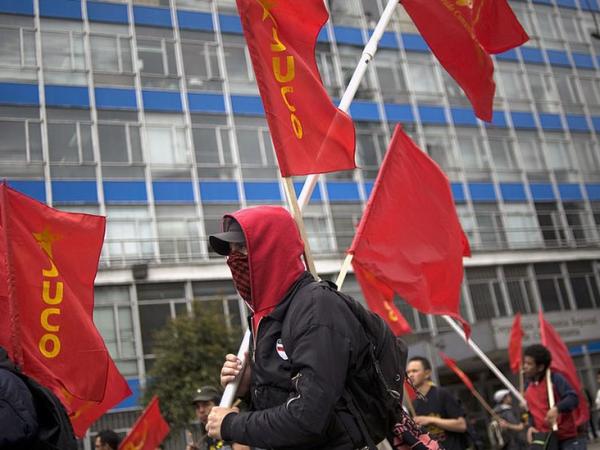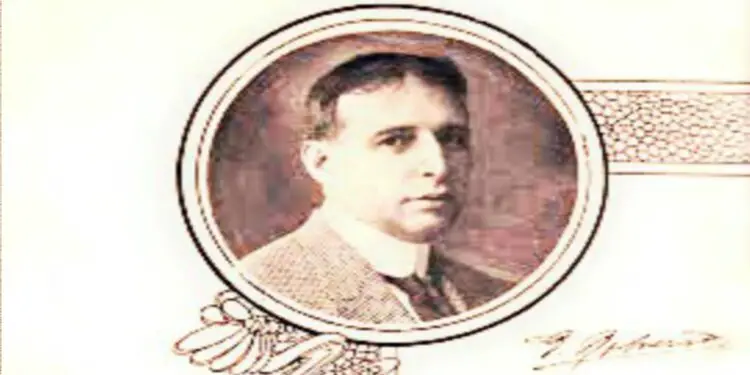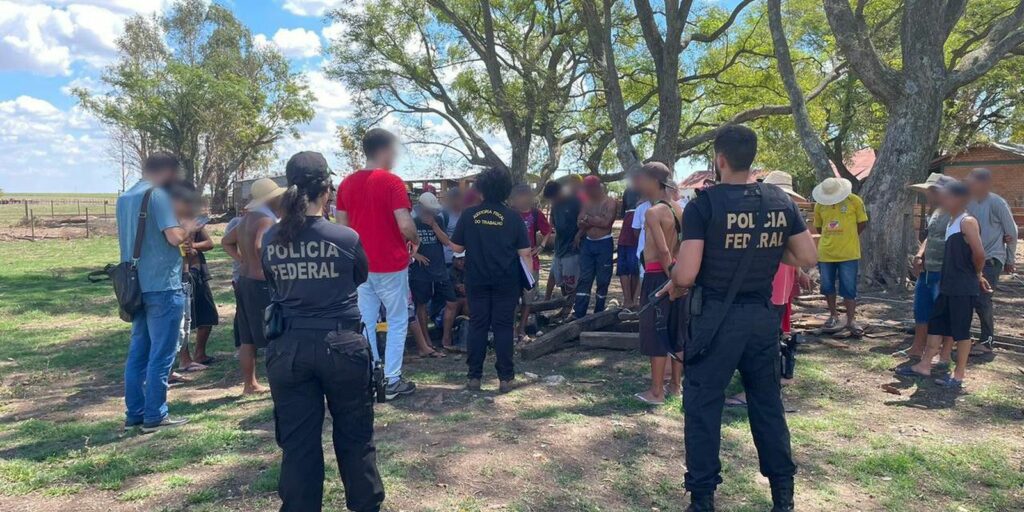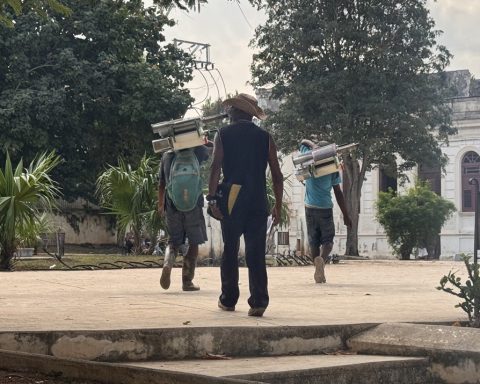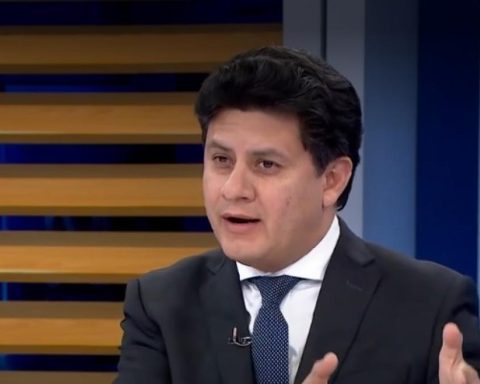Xenophobia has always been a problem in Colombia.
That is what the author Maryluz Vallejo says in her new book “Red-hot Xenophobia in Colombia” (Planeta, 2022), an essay that includes dozens of cases of foreigners who were persecuted and expelled from the South American country in the 20th century.
For the paisa journalist and academic writer, her work shows that the common idea that Colombia is a country that welcomes immigrants is nothing more than a myth.
After the success of “Plomo wounded” in 2016, a chronicle that shows the promiscuous relationships between journalism and politics between 1880 and 1980, Vallejo returns to the publishing world with an exhausting year-long investigation in which he compiled and studied more than 120 cases of xenophobia in your country.
But isn’t the arrival of millions of Venezuelans in Colombia a sign that the country has become less xenophobic?
Yes and no.
In an interview with BBC Mundo, Maryluz Vallejo spoke in detail about her investigation and the patterns followed by the authorities to expel “undesirable” foreigners over the past century.
BBC Mundo spoke with her within the framework of the HAY Festival Cartagena, which is held between January 20 and 22 in that Colombian city.
What prompted you to investigate xenophobia in Colombia?
The subject was proposed to me by the journalist Daniel Samper Pizano in 2021, when several cases of persecution of foreigners were presented, in particular an Argentine human rights defender who was denied a visa to enter Colombia.
I began to investigate and realized that the arbitrary expulsions of foreigners in Colombia have been a tradition, they have not been fortuitous or isolated cases.
I proposed to investigate from the 1920s, when the leftist movements and strikes began, when the Revolutionary Socialist Party was created, which would later give way to the Colombian Communist Party. That’s where most of the expulsions come from.
In your book, it is classified as a myth and an assumption to believe that Colombians welcome refugees generously. Why do you say it’s a myth?
Colombia was perhaps the Latin American country least open to migration in the 20th century.
The current moment is different, because Colombia has welcomed more than 2 million Venezuelans in recent years.
But in the 20th century, Jews persecuted by Nazism were also persecuted here. The same thing happened with the Chileans persecuted by the Pinochet dictatorship and the Spaniards who escaped from Francoism.
Colombia opened the doors to many foreigners, but it was more like a door ajar, compared to the more generous reception they had in neighboring countries such as Venezuela, Argentina and Mexico, countries that welcomed them and where they had job opportunities and did not make their lives bitter. .
Here, on the other hand, the immigration quotas were very limited and did not give them any chance of having a dignified and peaceful life.
The discourse that Colombia was very hospitable was repeated, but immigration laws were always hostile to foreigners.
Don’t you think that has changed a bit? In the last century foreigners were expelled for not having enough means of subsistence, that is no longer the case.
Clear. In this millennium it has changed. There is the example of the Venezuelans. The government of Iván Duque formalized the status of thousands of Venezuelans who have arrived in recent years.
But we have not been very generous with them nor have we helped them to insert them into society or the labor field. Most work in the informal economy.
In several of the cases that you present, you show that life was made impossible for many immigrants in Colombia, what are the chances of a Venezuelan having a dignified and peaceful life in your country today?
It is complicated because the first ones who migrated managed to have a professional social status, but the last waves are of people who also worked in the informal economy in Venezuela and here they have had a hard time surviving.
Venezuelans have been given the basics: education and health and access to services, but the government was not prepared to accommodate such overwhelming immigration.
In your book, you give an account of the mistreatment that many foreigners have received in Colombia, especially during the last century, when people accused of being communists or spies were persecuted and expelled. How does Colombia today differ from that one in terms of xenophobia?
Reports recently came to light about the persecution of Cuban, Venezuelan and Russian diplomats by the governments of Juan Manuel Santos and Duque.
That sounds out of place in this day and age that spies are still being searched for under stones. But in the 20th century it was much more common due to the prevailing anti-communism.
During your research for the book, you reviewed more than 120 cases of immigrants and refugees in Colombia who were persecuted, what similarities did you find in most of the cases?
The ejection pattern is very similar. Foreigners are almost always expelled in a very arbitrary manner and with very generic and subjective causes, they are branded as undesirable in the country or defenders of harmful ideologies.
And often the expulsion orders were issued by the police authorities, who were generally the most illiterate, at least at the beginning of the 20th century.
They were based on rumors and without proof. With these grounds it would not have been possible to judge any national.
They were persecuted for political ideas, especially if they were leftists and advocates of communism, trade unionists or academics with leftist thinking.
Where does Colombian distrust towards foreigners come from?
I attribute it in large part to that conservative thought and the Colombian mentality of being afraid of the other.
In addition, the Colombian right propagated ideas from the 30s that foreigners came to take the jobs of Colombians and with other cults or ideologies.
There was also a fear of “dangerous mixtures” because there was a cult of the purest race and not to mix it, unless it was with Europeans.
Shouldn’t there be more empathy and understanding in a country from which many immigrants have traditionally left for dozens of nations around the world?
Completely. That is why Colombians should have a more open and empathetic mentality with foreigners, but that is an illusion.
The legacy that the Spanish colony left us was to avoid contact with foreigners and it still persists in a certain way.
What is your opinion of the current Colombian immigration policy?
It is already standardized with international legislation and those miserable quotas of only accepting a certain number of citizens of different nationalities no longer exist.
But it also still depends on the political will of officials to be flexible and approve visas for foreigners.
In 1823, the first immigration law of Gran Colombia was enacted, which discriminated between “useful and industrious” foreigners and the rest, presumably not so useful to society. Do you think this philosophy is currently applied, especially with Venezuelans?
No, I think not anymore. Most of those who have entered lately have done so without papers, it is no longer possible to have that control.
Permission is now given to all. There is no longer that discrimination between useful and useless.
That is administratively, but do you think that the Colombian population no longer differentiates between “useful” immigrants and the rest?
Of course, there has always been that feeling of xenophobia, which remains. In Colombia, useful foreigners are considered to be those with college degrees or money.
The rest are idle, harmful and many more stigmatizing labels that are still used.
In Colombia there is still a great rejection of foreigners who cannot reintegrate into society.
There will always be that discrimination in Colombia. In Colombia, there is discrimination between immigrants who arrive with one hand in front and one behind, and others who arrive with resources.
Of the dozens of cases that you include in your book, which one surprised you the most?
The woman on the cover of the book is an Austrian nun who came to Colombia in the early 1950s and lived in Colombia until her death in the 2000s, her name was Herlinda Moises.
He spent his entire life in a corregimiento in Bolívar, near Cartagena. He did a lot of work for the poor and for his community.
In the 1970s, when there was much persecution of those considered close to the guerrilla movements, the authorities linked it to the ELN. They accused her of being an ELN auxiliary agent and she was imprisoned for several months.
When she tried to apply for Colombian citizenship in the 1980s, she was denied because they accused her of being an agent.
She was really a nun who worked for the poorest, she received many awards and they even proposed to beatify her, but in Colombia she was considered a guerrilla.
Was it considered that way by mistake or because of xenophobia?
It is an example of when xenophobia meets phobia of communism. In the 70s, the most progressive religious, who helped the poorest, were linked to the guerrillas. She was the victim of that stigmatization.
Remember that you can receive notifications from BBC News World. Download the latest version of our app and activate them so you don’t miss out on our best content.
